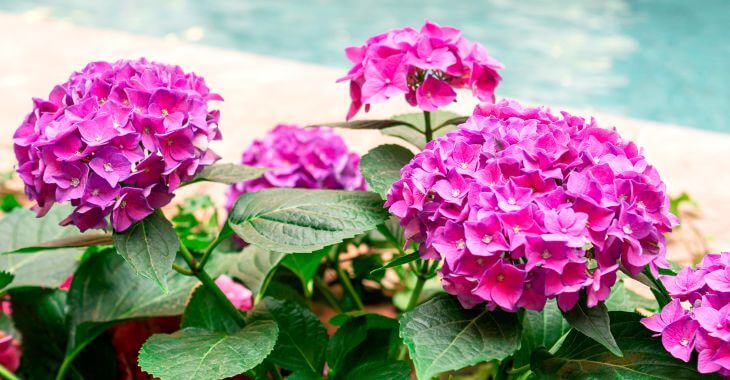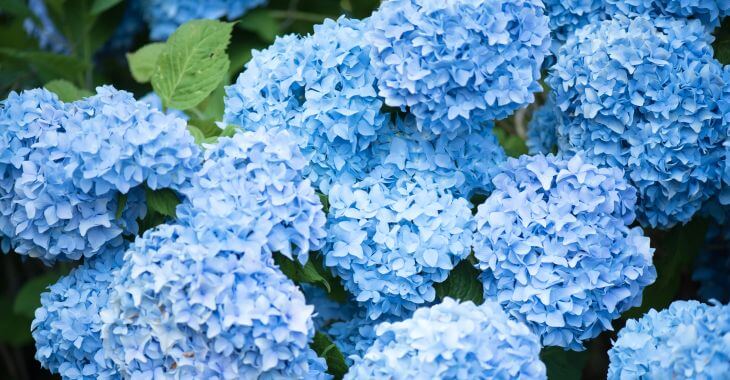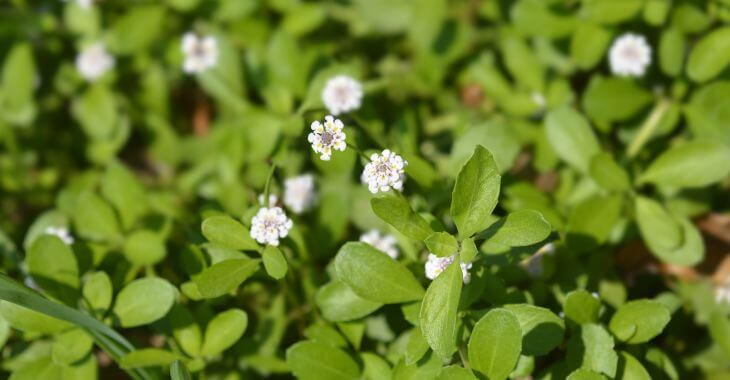When to Fertilize Hydrangeas and Other Hydrangea Care

Hydrangeas are flourishing shrubs with gorgeous, colorful blooms that can enhance your yard and landscaping. These bushes come in a wide variety and can add stunning pink, purple and blue colors to your outdoor area in spring and summer. While these beautiful bushes may look difficult to grow, hydrangea care is easier than you might think. Here is what you need to know about when to fertilize hydrangeas and other hydrangea care tips.
Knowing Your Hydrangeas
The first step in hydrangea care is knowing the types and where they best flourish. Hydrangeas are popular for the moderate climates in the US, which includes the 3-9 zones with milder winters. These bushes can grow up to 15 feet, but also come in dwarf varieties that can be planted in containers. Most prefer morning sunshine and partial shade with well-draining soil. Some of the most common types of hydrangeas include:
- Bigleaf – these are the most common hydrangeas in the US and can do well in the warmer climates
- Oakleaf – for southern, hot-summer regions, oakleaf hydrangeas can be an excellent choice
- Panicle – in the mild climates, panicle hydrangeas can thrive and grow up to 15 feet
- Smooth – also called snowballs, smooth hydrangeas are hardy for cooler climates
Choosing the right hydrangeas for your climate can make it easier to care for these hardy bushes. When planted in the right environment, hydrangea care is simple, even for those without a green thumb. Following a few basic care instructions on watering and when to fertilize hydrangeas can result in gorgeous shrubs with stunning blooms to brighten your outdoor space.
Hydrangea Care: Sun, Shade and Water
All plants need the right combination of sun and water. While some plants thrive in direct sun, most hydrangeas do best in partial sun and shade. The ideal combination for most hydrangeas is morning sunshine and partial shade during the mid-day, allowing them to get the sun they need without too much heat to wilt these large shrubs.
Another aspect of hydrangea care is watering. Hydrangeas need moist soil to thrive and appreciate a thorough weekly watering. Most hydrangeas will flourish with one inch of water per week, but during their early growth you can water deeply a few times a week to promote root growth. To keep the soil moist, especially during the hot months of summer, use a quality mulch around your hydrangeas. This will insulate the soil and reduce moisture loss, and will also add nutrients to the soil as the mulch decomposes.
When to Fertilize Hydrangeas
Adding fertilizer to the soil can nourish your hydrangeas, but you do not want to over fertilize these shrubs. The endearing traits of hydrangeas are their glorious blooms, but too much fertilizer can halt these flowers. Adding the right fertilizer to alter pH balance of the soil can also change the color of the blooms. To keep your hydrangeas healthy, you want to fertilize 1-2 times a year – you also need to know when to fertilize hydrangeas, which can vary based on the type of hydrangea you own and where you live.
In warmer climates, you can fertilize your hydrangeas twice a year. The ideal times are late spring and mid-summer. In cooler climates, fertilizing once a year is plenty, and mid-summer is perfect timing. The most important thing to remember about when to fertilize hydrangeas is avoiding late summer and fall. Never fertilize after August and it is better to fertilize less often than fertilizing too much, since it can affect the blooms on your bushes. Follow the instructions for your fertilizer to get the best results.
Change Soil pH Balance for Color
Hydrangeas can be affected by the pH balance of the soil and it can change the color of their blooms. Not all hydrangeas change color due to pH balance – the white or ivory varieties do not usually change in color regardless of soil. The bigleaf hydrangeas that have pink, blue or purple blooms can change color based on pH balance in the soil.
- For blue blooms, the pH balance of the soil should be 6.0 or lower.
- To achieve pink blooms, higher alkaline at 7.0 or higher is best.
- For purple blooms, keep between blue and pink at 6-6.9.
You can change acidity and pH balance by adding certain nutrients. To lower pH, you can add a soil acidifier or use pine straw as mulch. To increase pH, you need to add limestone or wood ash to the soil.

Hydrangeas can be a showstopper for your landscaping, adding gorgeous colors throughout spring, summer and early fall. Even beginners can have success with hydrangeas if they ensure they get enough water and are planted in the right areas. When to fertilize hydrangeas and general hydrangea care can make the difference between flourishing shrubs and wilting bushes with no blooms. If you are struggling to make your hydrangeas thrive, contact your local landscaper for tips on hydrangea care.
